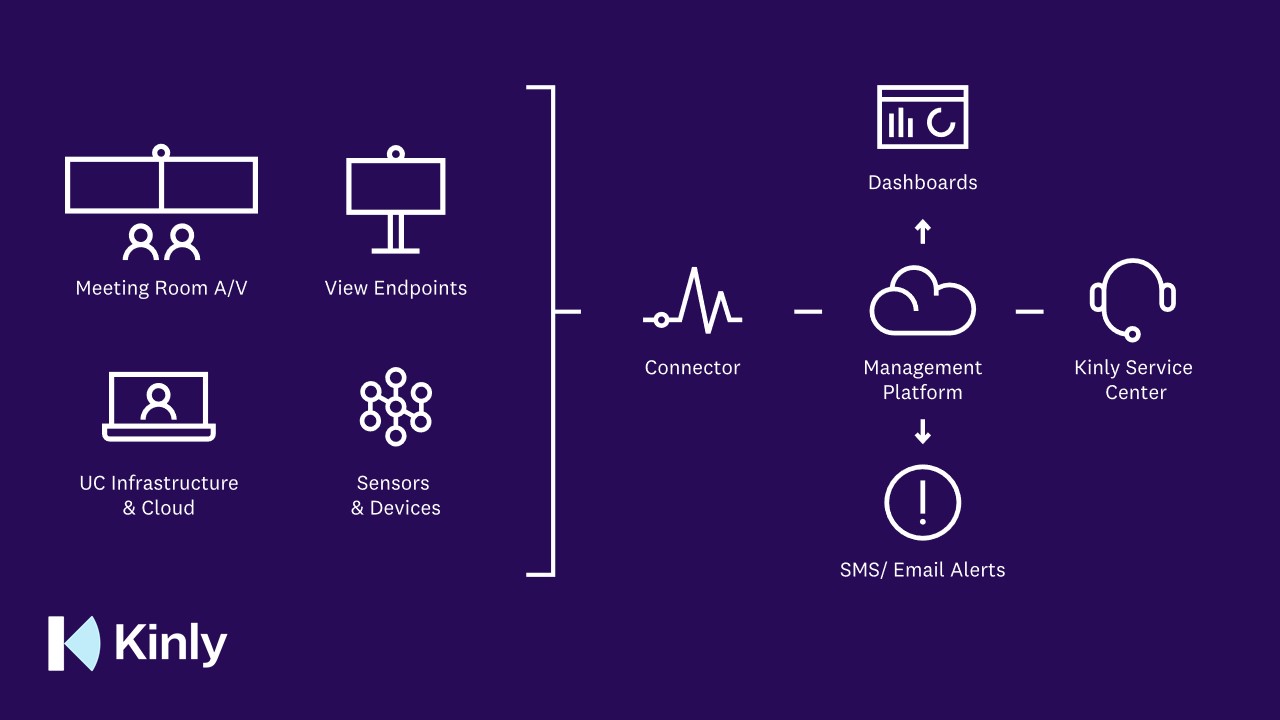Smart Monitoring: Setting IT Free
Supporting your video conferencing, AV and UC environment alongside every other piece of technology in an organization can be challenging for IT departments. Duncan MacPherson explains how Smart Monitoring can ease the burden.

Time is already a rare commodity for many IT departments, and as more and more technology becomes embedded in the workplace this is only going to get worse. According to an IDC InfoBrief, more than 66% of the managers surveyed expect to communicate with their workforce regardless of places and spaces by 2025. That means more AV tech. With an increasingly digital workplace, IT Directors and CIO’s must look for innovative solutions to free their teams from the shackles of traditional, reactive maintenance support.
Whose responsibility is AV?
The reality is that technology is moving faster than people. While boardrooms see the value of videoconferencing and AV – and many are already investing heavily to provide their workforce with high-end solutions – supporting these systems in-house alongside every other piece of technology in an organization can be challenging. A modern VC, AV and UC environment has a multitude of products from hardware to software that refuse to communicate with their competitor’s equivalent.
The responsibility of enabling IT to run their AV environment has to fall to the supplier of that environment. They should do this in one of two ways:
- Employ a customer-success program
- Deploy a Smart Monitoring solution
Smart Monitoring – How it works
In general, adopting new technology is a big challenge for many companies, and making it work can be an even bigger one. Most modern users expect the technology they use to just work. When it doesn’t, people blame IT. As a direct reaction to this, several providers now offer monitoring in one form or another, and this is good for the industry.
So, how does Smart Monitoring work? AV monitoring is part man, part machine. First, the supplier is granted continuous, remote access to the customers VC, AV and UC components and infrastructure. From there, they can monitor and collect data from every room, down to every individual component. IT can then choose to set the supplier in charge of support – which is more common for smaller IT departments – or they can choose to receive detailed notifications on errors by email.
All this means three things for companies deploying AV environments:
-
Increased AV Reliability and Uptime
For the user, the technology works. For IT, it is freedom. This is hands down the most significant benefit of AV monitoring, in my opinion.
-
Asset and Investment Optimisation
The data we collect is also precious to the client because it shows activity; it reveals how the rooms are being used. The next time the board wants to expand, the IT Director can point to the data and say: “we don’t need one large £60,000 room this time, we need three £10,000 huddle-rooms instead.”
-
A Better Strategic View
Less wasted time for IT means more time to provide excellent maintenance across the board – or they can focus on propelling the company’s technological strategy forward.
IT can still go wrong
Kinly Smart Monitoring is a valuable tool that enables IT to run their VC, AV and UC environment to its fullest potential. The entire organization – not just IT – stands to gain from tools like these; tools that qualify as competitive advantages in a world where technology is becoming a core part of any business, regardless of industry.
However, all monitoring solutions are not equal. Because of the way the AV industry behaves, choosing the right option for your business is not as easy as it may sound. Very few suppliers offer AV monitoring that can handle a diverse VC and AV environment, so choosing the right supplier is crucial.
In the next blog post, you can learn the six rules for choosing the optimal monitoring solution.
Duncan and his team will be showcasing Kinly Smart Monitoring at Integrated Systems Europe (ISE) in Amsterdam, 11-14 February 2020. Click here to claim your free ISE ticket >







